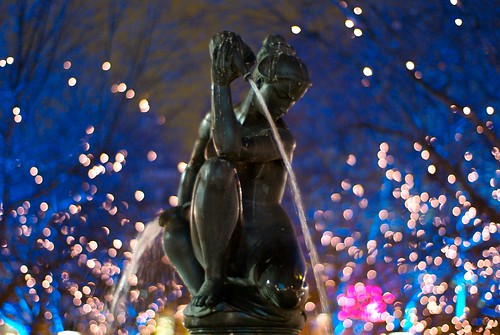Antique Amber for BuenoStyle
 One of the things I've enjoyed the most last year, was collaborating with other creative and passionate business women in Vancouver, who I was fortunte enough to meet. As you may have already seen on BuenoStyle's blog, my 1st collaboration for 2011 is ready to launch this weekend!
One of the things I've enjoyed the most last year, was collaborating with other creative and passionate business women in Vancouver, who I was fortunte enough to meet. As you may have already seen on BuenoStyle's blog, my 1st collaboration for 2011 is ready to launch this weekend!Christi York of BuenoStyle creates jewelry from vintage finds that she collects and assembles with her own design sensibilities and style: chains, beads, brooches, lockets and vintage charms. Walking up the stairs leading to her studio, the scent of antique furniture and wood-polish and hints of incense perfumed the air ever so gently. Her studio is located on Main street, with a large window to the street observing Shaktea tea salon (I'm so envious!). These wide windows bring in plenty of natural light so one can marvel at the beautiful miniscule vintage treasures, such a chains of pearls, antique brass clasps, rolls of vintage chains, crystal and glass beads, Bakelite flowers and old tarnished filigreed lockets - attractively arranged in wooden trays of print setters.
So it only made sense to call the perfume that was going to complement BuenoStyle's jewelry with the name Antique Amber!
Christi's favourite scent has been Cancer perfume from my (now discontinued) Zodiac collection. We felt that while the perfume was very appropriate for the style and personality of BuenoStyle, this name was misleading. So we formulated it for a solid perfume base, and changed the name to Antique Amber, so that even people who were not born under the sign of the crab will feel compelled to adorn themselves with this exotic amber perfume!
Antique Amber is an oriental-ambery perfume with an old-world charm, like an antique wooden dresser filled with treasures: Luxurious amber resin, exotic patchouli-scented shawls, and remnants of jasmine perfume for an extra feminine touch. Borneol camphor and a hint of aniseed add a mysterious, lingering cool/warm intrigue.
Antique Amber can be worn alone or can be layered with other perfumes for added depth mystery.
Notes: Amber, Camphor, Aniseed, Jasmine, Patchouli
Fragrance family: Oriental-Ambery
Antique Amber will debut tomorrow, encased in BuenoStyle's perfume locket pendants with vintage chain patchwork and crystals (each is a unique design - one of a kind piece!) at the Indie I Do show at Heritage Hall (Main @ 16th Ave), tomorrow - January 22nd, from 11am-5pm. Hope to see you there!








Incidentally, my spring cleaning also revealed some treasures. Literally. I found my lost formula for the 5-spice accord I was hoping to use in some upcoming revolutionary floral (I don't know what would be revolutionary about it but I can feel it). I also found 7 pendants, probably in the same drawer. Which a good thing because otherwise I would have needed to order more!
So, the 5th mod of Ginger & Amber features the abovementioned Magnolia Lily, as well as a hint of Egyptian jasmine grandiflorum absolute (a stellar jasmine if you ask me). I also created a 6th mod, in which there is even more magnolia lily and jasmine, as well as some ginger lily (the root, not the flower). It is still just as juicy and cozy as the 4th mod that I loved, but thanks to the floral heart notes it has less of the hollowness that typifies perfumes based on a top-note & base-note marriage.